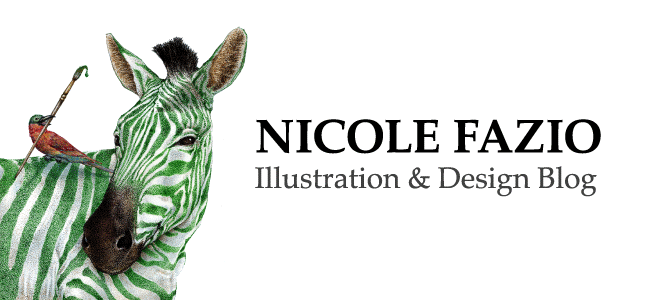I thought it might be interesting to show you a peek into my process of painting these book illustrations, and share a step by step from one of the pieces in My Massachusetts. So here we go!
* * * * * * * *
It all starts with a small thumbnail sketch to get the general initial idea down from the text that goes along with it. There are a couple more rounds of sketches from there, each time getting larger and more worked out, until reaching the full scale version--defined, detailed, and ready to transfer to the real deal.
Below is the finished sketch for this page (page 7 in the book).
Done with 2B graphite pencil on a toned drawing paper:
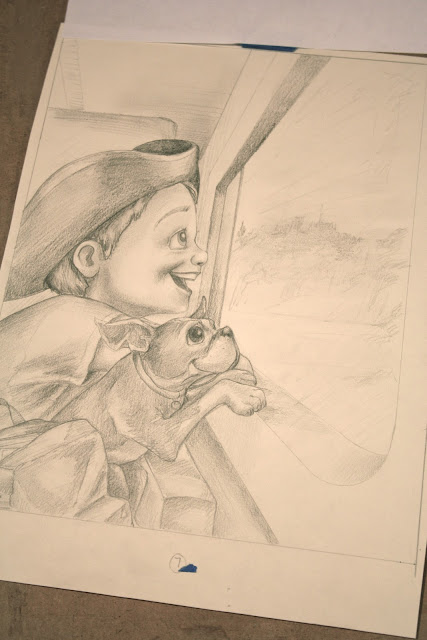 |
| Final sketch drawn at 100% scale for book, including bleed area (8.5"x10.5") |
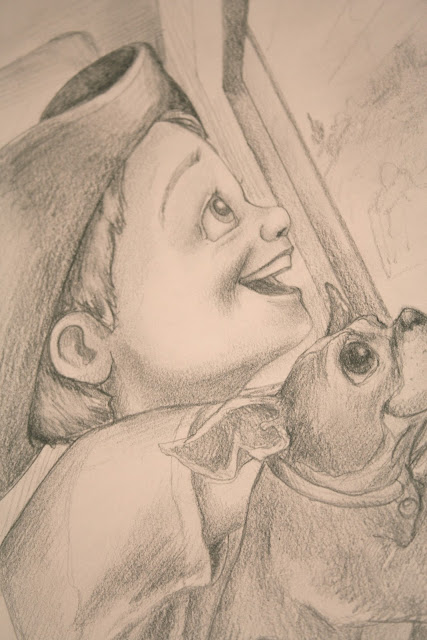 |
| Detail of pencil sketch. |
Next, I scan my sketch. I lighten up the image and any imperfections in Photoshop, then print my sketch directly onto the watercolor paper, to be used as an under-layer for the painting. I print the sketches on watercolor paper at 100% scale on a large Epson printer (thanks for letting me use your awesome printer all the time, dad!).
In this case, I drew in a revised view in the window after the printing, but here it is after being printed on my watercolor paper. I use Arches 140 lb Hot Pressed (Hot Pressed is a smoother texture than Cold, which has more "tooth" and can snag the fine tips of the pens that I use later).
Before I start painting with my watercolors, I have to prep the paper so that it remains flat, since the moisture of the water makes the paper warp and ripple, which can be frustrating while working and make the watercolor washes become pooled and inconsistent.
Below is my preferred technique for a "quicker paper stretch". There are other ways of stretching watercolor paper, which traditionally involves soaking the paper for a longer period of time...I'm far too impatient for that, I've tried it!
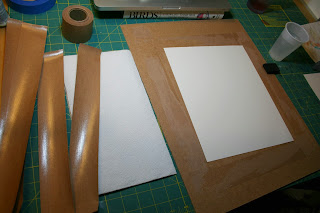 |
| 1. I use brown adhesive-backed tape, a large hardboard panel, some water and a sponge or two...and lots of paper towels. Cut the strips to fit each side of the paper and then some. |
 |
| 2. Then I evenly soak the back side of the paper with water and a sponge... |
 |
| 3. Turn it over and do the same to the front. Each side needs to be pretty wet. |
 |
| 4. Once wet, it should stick pretty well to the hardboard. Smooth out any air bubbles and soak up any excess water on edges of the paper and board. |
Now that the prepping is done and the paper is dry, I leave the brown tape right on there while I paint to keep my paper flat. I used to use artist tape or blue painter's tape, but I've found that this brown tape works much, much better, and I use a lot less of it. Love this discovery and wish I'd tried it sooner!
Before I start painting, I cover up and areas that I want to preserve using blue painter's tape and liquid masking fluid (one of my can't live without studio staples and favorite things!). This keeps the watercolor from reaching the covered areas, which will either remain white or be worked on later in separate sections.
 |
| Masking fluid is applied with small, cheap (usually get thrown out after a few uses) brushes, and removed by fingers or rubbing gently with a rubber cement square. |
 |
| This shows the areas with blocked off areas or edges. The masking fluid dries kind of yellow, but as long as it's removed in a timely manner it doesn't stain the paper at all. |
Once the masking fluid is completely dry, I can start laying down my first layers of paint!
I also always give the whole page a clear water wash before even masking anything off, just to give the paper one last evening and prep for paint. This also helps to prevent the tape and masking fluid from pulling up the paper when it's removed.
I like to start with the largest areas to cover, and work my way in and smaller, ending with detailed areas, like faces. In this case, I did the interior walls and chair of the train, then worked on the window view.
I keep masking new areas as I go, here you see above, the white of the hat, eyes and teeth are being preserved...and look kind of creepy!
I tend to jump around a lot. If I feel compelled to jump into some detail, I'll go for it before finishing another large wash area.
Above is the basic watercolor painting layer finished. I did a fair amount of shading with the paint on this book, then kept the pen and ink work to just outlining and some hatching for extra depth and detail.
For the final layer, the pen and ink portion, I work with color liquid acrylics and Rapidograph pens. They come in many tip sizes and are refillable, which I love because I can use any color of ink. I like to use the especially tiny tips. Below is the finished piece.
And then I do that 20 or so more times until every page is finished!
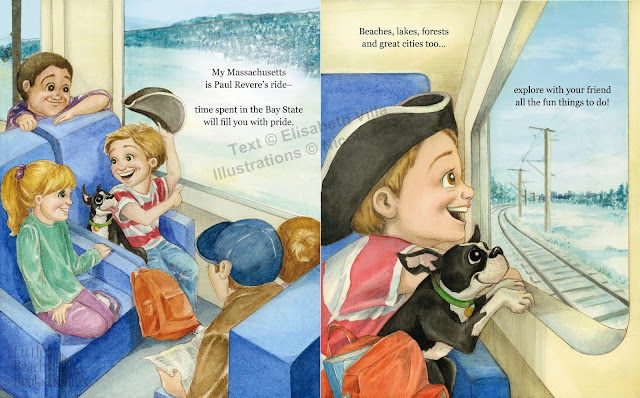 |
| Here's the finished product as seen in the spread on page 6-7 in the book, My Massachusetts! |
Here's another bonus image, because I think it's fun seeing the pieces while still in progress. This one is from the end of the book, window view complete, foreground untouched:
I hope you enjoyed this little glimpse into my process!
To see it in person, be sure to check out My Massachusetts,
available now at LittleBeachBooks.com.
